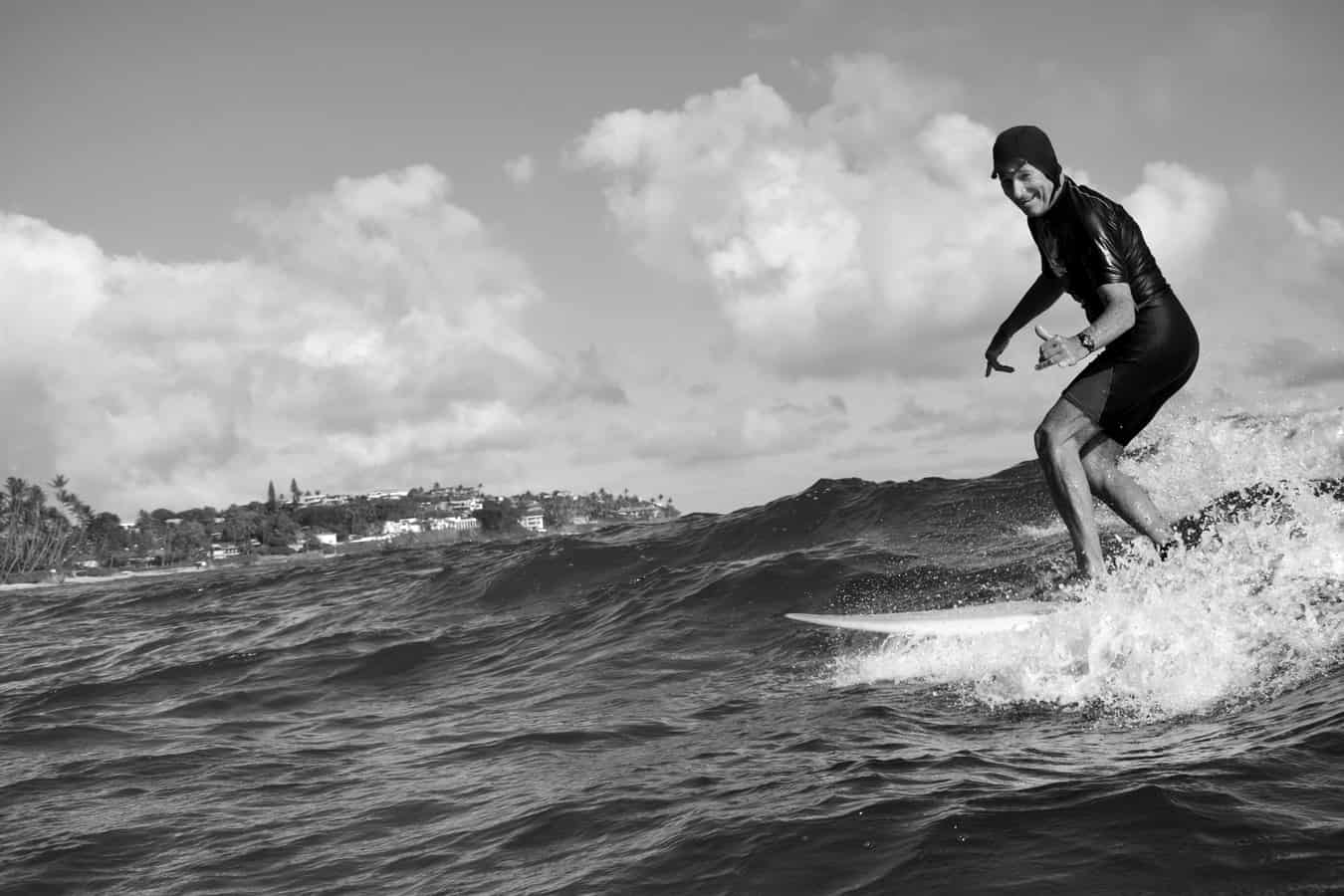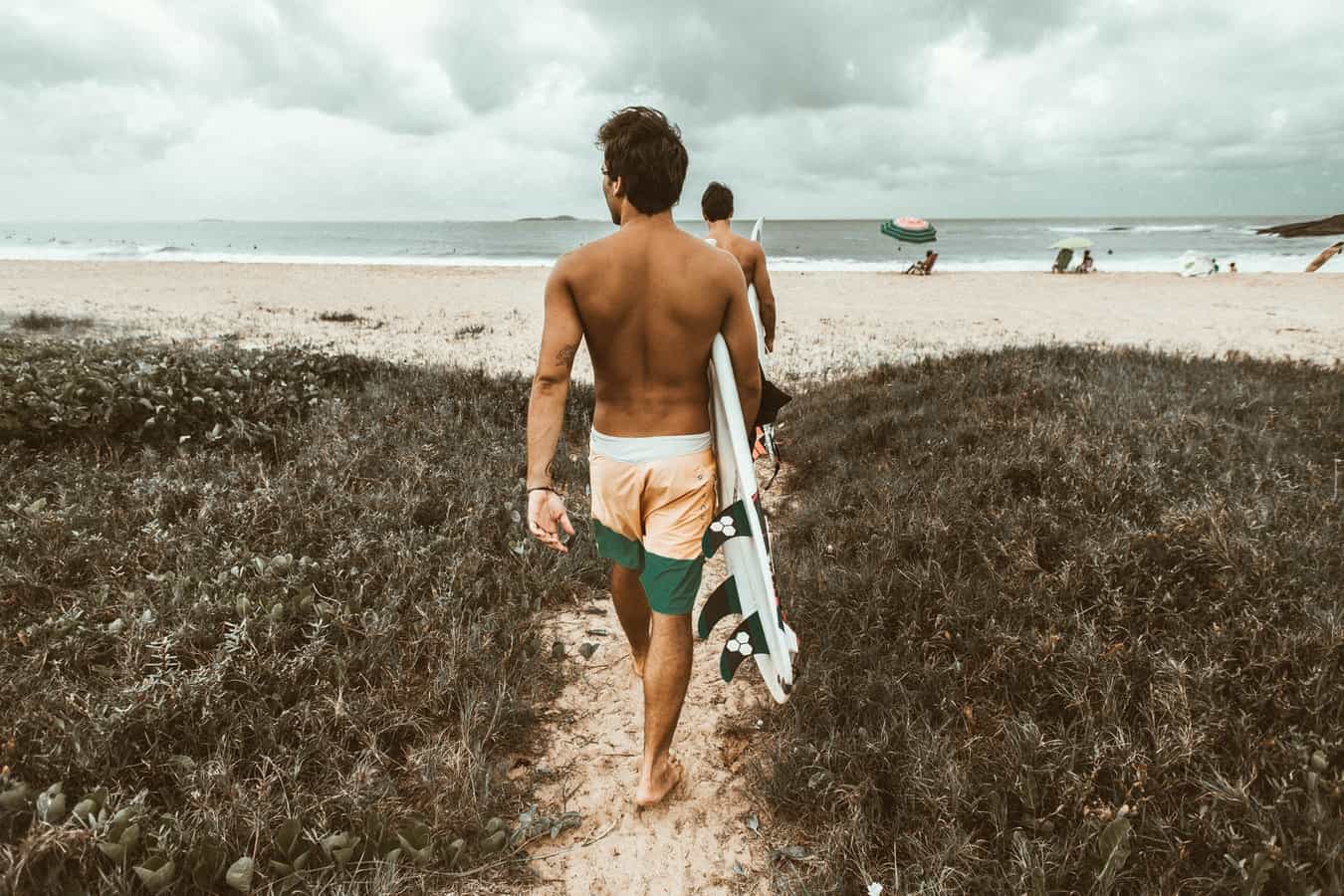So you show up to your break ready for an epic session. Unfortunately when you get there, it’s all two footers.
Maybe you’re ready to turn around right then, or maybe you’re down to tackle it anyway and own those small waves. Afterall, surfing is surfing, no matter the size of the waves.
Since you weren’t expecting it though, you only have your shortboard on hand. Or maybe you weren’t expecting to surf at all but someone has a shortie to lend you.
Can you still ride a shortboard on small waves? Yes, you can definitely take on small surf with the right shortboard. Typically, a longboard is suggested when surfing small waves. But that doesn’t mean you can’t do it with a shortboard. It does mean approaching the waves differently though, as well as using a shortboard suitable for small waves.
Shortboards are generally seen as boards for larger surf because they’re made for agility and maneuverability over power.
A shortboard is much lighter, thinner and (obviously) shorter than a longboard, meaning it’s harder to be picked up by the force of small surf which is typically weaker than big waves.
It’s much easier to catch more powerful, larger waves when you’re on a shortboard than smaller stuff. That doesn’t mean you can’t though.
Choosing a shortboard suitable for small waves will help tremendously. Plus it offers a new challenge to your ability.
On top of the right shortboard, you’ll also have to use more power and technique to ride small waves over a longer board, making them good practice if your goal is to improve your ability in larger swells.
Pros Of Small Surf
It can feel like a bummer when you show up expecting a great swell only to find little waves, but that doesn’t mean you should head home.
There’s plenty of reasons to show up for small surf. They’re great for practice, it’s less crowded, and they can be a lot of fun. It’s all about your mindset.
Practice
Small waves are awesome practice for your shortboard. The challenge of catching waves and riding down the line will help you improve on big days.
You can practice tricks that would be more nerve wracking or challenging on larger waves, perfecting them for their debut on a better day.
You can also work on your technique. You’re probably not paying as much attention to your form and technique when the waves are big. Small surf gives you time to really think about your paddling and stance.
Perfecting and tweaking these in small surf will give you a leg up when the real swells roll in.
It’s also good practice for reading the waves. You can focus on the wave formation and your plan of action in a way you might not be able to on more powerful days, helping you become a better overall surfer.
Spend enough time in the small stuff and you’ll be surprised how much easier it is in the big stuff.
No Crowds
Granted, small days will probably have more beginners around, but in general you can count on far less surfers in the lineup than during a “good day”.
Less surfers mean less wait time for you and more time actually catching waves.
This extra time lines up well with the whole more practice point. It also makes for a more relaxed environment.
Without crowds you don’t have to spend as much time watching out for other surfers or stray swimmers. You can focus more on the waves themselves.
It’s also peaceful to be on the water without tons of people around. When you take a break you can actually listen to the sound of the water and movement of the ocean without being interrupted.
You also don’t have to worry about hurting your pride or reputation. You can try and go for anything you want and test out new tricks without worrying about looking foolish for a crowd.
Maybe you’re confident enough to do this anyway, but it is definitely easier without a large audience.
Fun
Small waves can be fun. Tiny surf are not serious waves, so you don’t have to take yourself seriously either.
It’s a good time to get back to the basics of surfing, like remembering why you began in the first place. Surfing just for the joy of catching and experiencing the waves.
Try that new maneuver you’ve been too nervous to test out on big waves, or just glide down the face until you hit the shore. Small surf can just be about having fun and enjoying the water over competing for the biggest waves.
Sometimes we can start to take ourselves too seriously and small waves can be a good reminder that surfing is all about having a good time.

How To Catch Small Waves On a Shortboard
Catching small waves on a shortboard requires a lot of power and effort when compared with larger waves or simply riding a longboard.
As mentioned, this is a great place to practice technique and form, and you’ll be getting a lot of that when it comes to paddling and pumping down the line. When using a shortboard, you need to paddle hard and paddle fast to gain enough momentum to catch a wave.
However hard and fast you normally paddle, you’ll need to go even harder to catch those 2 footers.
Angle your board down the line instead of facing straight out on the takeoff. This will help you keep and gain better speed as you take off since you aren’t wasting it by having to turn your board.
As soon as you’re up, start pumping down the line. Since small surf is weak surf, you need to be creating your own power as you ride to shore.
And make sure you keep your stance wide and low to help you decrease drag and pick up momentum.
Choosing The Right Shortboard
The reason longboards are generally suggested for small wave surfing is because of the volume and surface area they have.
The greater volume provides better buoyancy, helping them float better, while these wider and longer boards provide greater stability as well as more space in general.
Extra buoyancy and extra room helps in catching less powerful waves as they’re better able to pick you up.
However, longboards are also heavier and clunkier making them harder to make maneuvers and do tricks with. nIn this way, a shortboard can be better than a longboard, especially if that’s what you use in big waves.
In order to make the most of small days though, you need a shortboard suitable for little waves. Using the logic of buoyancy and surface area, you need something wider, with greater volume.
Also look for a low rocker (the underside curve of your board), and a thicker nose and tail.
All of this will help you gain speed and power when going after small surf while still being about to make turns and pull off tricks. There are tons of small wave shortboards available these days. If you’re having trouble picking one out, ask for help at your local surf shop.
Other Boards For Small Waves
While you can totally ride little waves with a shortboard, there’s also other options if you’re looking to purchase a new one or wondering about the boards you have.
Longboard
First is logically the longboard. Longboards are really great for riding the small surf. They make it easier to take off and have great stability for staying up on the wave. They’re perfect for beginners and advanced surfers alike.
Longboards can be harder in big surf though. Because of how much bigger and heavier they are than a shortboard, you may struggle trying to maneuver and turn, especially when riding bigger waves.
Not to mention, if you wipe out, you have a much bigger and heavier board coming after you. So if you’re planning to surf a wide range of wave sizes with one board, this may not be the top option.
Funboard
A funboard is a step down from the longboard, meaning it’s still pretty long, around seven and a half feet. This board allows for better mobility for easier turns, while still having the benefits of a longboard, high volume and good stability.
Another great board for beginners, this one is perfect for small waves.
Fish
A fish is a specific variation of the shortboard. It’s wide at the nose and tail with a flatter bottom.
They have greater volume than a typical shortboard helping you to catch small waves.
The fish also has a split in the tail, often referred to as a swallow tail. This split is what gives the board its name as it resembles a fish. The swallow tail allows for quicker turns and better maneuvering of the waves making this board a great option for small surf.
Related Questions
What Size Waves Do You Need to Surf?
You can literally surf in any size wave, even ankle high or 1 foot waves as long as you have the right board and attitude.
While bigger waves may be more coveted and offer more power and room to play, Smaller waves are great for beginners and good practice for intermediate to advanced surfers alike.
Why Choose a Shortboard Over a Longboard When Surfing?
You can ride a longboard only for your entire surfing career, but there are also lots of different boards to try. Longboards offer better floatation and stability, but they’re heavier, clunkier and harder to turn in.
This doesn’t matter when you’re new to surfing since you won’t be doing a whole lot of tricks, other than staying standing.
But once you reach a certain level of skill, you may want to trade out for a shorter board. A shortboard offers a new challenge to your surfing skill since they are much more lightweight and thinner, both in volume and width.
They offer much greater maneuverability for catching air and doing tricks.


